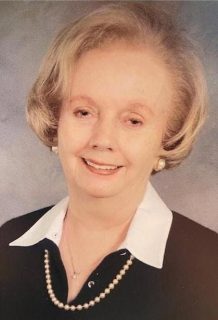Civil War Walking Tour Saturday
Published 12:00 am Wednesday, September 14, 2011
This Saturday, September 17th will be a free Historic Civil War Walking Tour as Bowling Green commemorates the 150th Anniversary of the Confederate invasion of our town in 1861.
Enjoy a self-guided architectural tour of Bowling Green’s Civil War buildings with costumed interpreters who will share some history and lore at most locations. The tour begins at The Presbyterian Church at 1003 State Street and lasts from 10 a.m. to 1 p.m. Attached is a list of the sites along with a map, and these will also be available at The Presbyterian Church. For a full list and more information about other activities all over Bowling Green on Saturday, September 17th, please visit http://visitbgky.com/micro/civilwar/sesquicentennial-events/
Trending
Historic Civil War Walking Tour 10:00AM-1:00PM Self-guided Free – Tour begins at The Presbyterian Church.Visit other locations in order of your choice.
A. The Presbyterian Church 1303 State St. The Presbyterian existing a hospital during military occupation of Church, on this site from 1833, became
Bowling Green. Windows, pews,and other furniture were removed to save the building from destruction. Reverend Richmond K. Smoot held services at another site while the building served as a hospital.
B. Grider House (NewellHouse) 1320 Park St. Owned by a Union sympathizer, this house was captured by the Confederate Army and served as Kentucky’s Confederate Capitol Building. lt was the residence Governor. government of the Confederate Provisional meetings took place here.This hill also contained a “lunettefort” and three mounted cannons
C. Voltaire Loving House 1253 State St. Built by William Voltaire Loving in the 1840s, was originally closer Street. In 1909, the Ashby family moved the house by use of logs and mules. Loving was a prominent lawyer,served in the Kentucky as Assembly legislator and Senator, as Commonwealth Attorney for his district, and Circuit Judge.
D. Boxwood(ClarkHouse) 1234 State St. Boxwood, named for the arge number of boxwoods planted on the grounds,was built by John B. Clark,
Trending
whose wife was Sarah Grider, sister of Colonel John Hobson Grider. Clark was a carpenter and maintained a shop at the corner of State and 12th Streets. Prominent banker, Pleasant J.Potter, occupied the home during the Civil War.
E. Quigley-Younglove Building 900 State St. Built in 1837 by Thomas Quigley, this building served as a dry goods store. Probably the oldest building on the square and oldest commercial structure in Bowling Green, Quigley sold the store to Joseph E. Younglove, who operated a drugstore, post office and stage coach stop from 1844 through the Civil War.
F. Mariah Moore House (Mariah’s Restaurant) 801 State St. The oldest surviving brick structure in Bowling Green, this home was built by George Moore who founded the city of Bowling Green with his brother Robert in 1797. George’s wife, Elizabeth, and their daughter, Mariah, lived in the home during the Civil War.
G. Pushin Department Building (Zingarella Boutique) 426 E. Main This was the site of the Rochester Hotel, razed in 1921and replaced with the Pushin Department Building. This portion of the square was probably burned during the Civil War by Confederate troops. lt was also the site of the first tavern and eating place in Bowling Green, called McDowell’s, which opened in 1816.
H. Maier Building (Morris Jewelry) 408 E. Main During the Civil War, this was the site of Bewley and Kemble Hardware Store that would have provided crucial supplies for both Union and Confederate troops, lt has operated as a jewelry store since Frank Maier owned the building in 1881.






